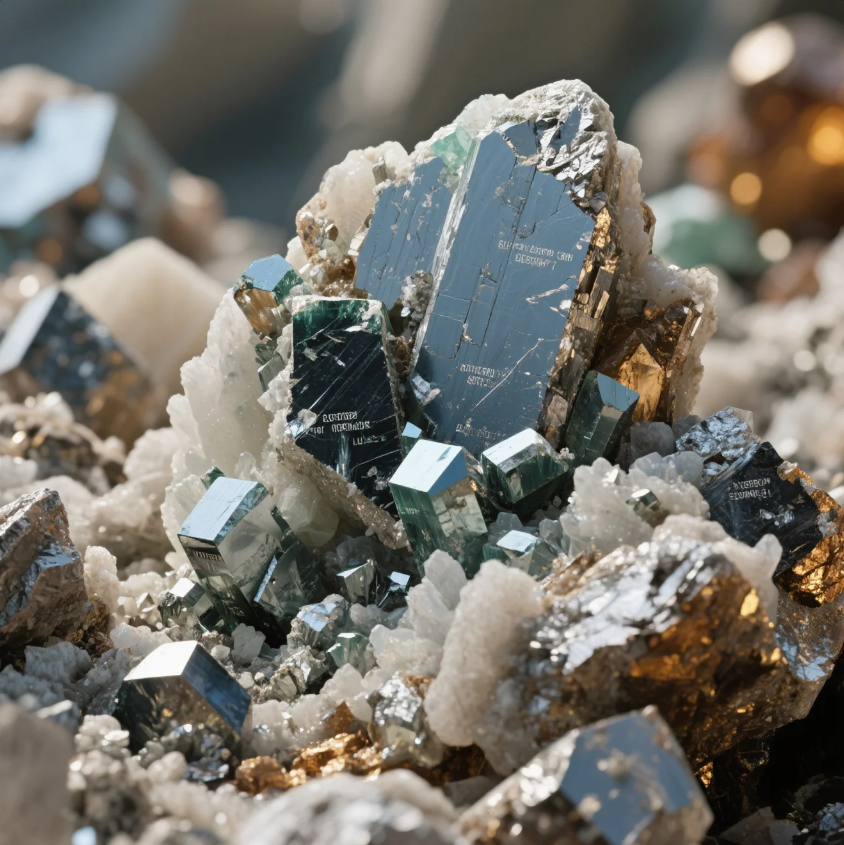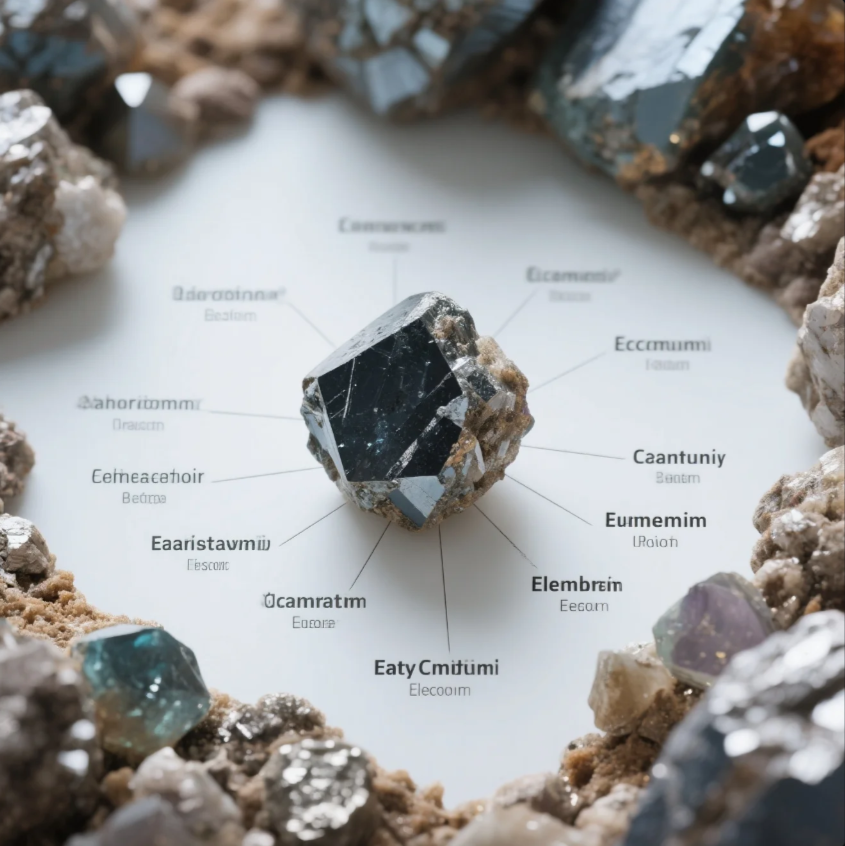What Is One Native Element?

In the world of geology, a native element is a type of mineral composed of a single chemical element. Unlike most minerals that are compounds of two or more elements, native elements consist of just one element, making them unique in their simplicity. These elements are found in their natural, uncombined state in nature.
Snippet paragraph: Native elements are minerals composed of a single chemical element, like gold or copper, found naturally in the Earth’s crust.
Transition paragraph: Let’s explore what exactly defines a native element and look at some common examples found in nature.
What Is 1 Native Element?
A native element is a naturally occurring mineral made up of only one element. These elements are found in their pure, uncombined form, without needing to bond with other elements. The most common native elements include gold, copper, and sulfur. These elements can exist in nature in their purest form due to geological processes that prevent them from reacting with other substances.
Snippet paragraph: A native element is a pure, naturally occurring element, like gold or copper, that doesn't need to bond with other elements.

Dive-Deeper paragraph:
Native elements are distinct from most minerals, which are composed of multiple elements combined in specific ratios. For example, gold (Au) is a native element because it exists in nature as pure gold without needing to combine with other elements. Similarly, copper (Cu) and sulfur (S) can also be found in their native forms in the Earth’s crust. Native elements are typically formed through physical processes like weathering, or through chemical processes that prevent them from bonding with other elements. Over time, these elements accumulate and can be found as minerals or nuggets in the Earth's surface.
Examples of Native Elements
| Native Element | Chemical Symbol | Common Form of Occurrence |
|---|---|---|
| Gold | Au | Nuggets, veins in rocks |
| Copper | Cu | Nuggets, veins, or as fine particles |
| Sulfur | S | Found in volcanic areas and hot springs |
What Is an Example of a Native Element?
One of the best-known examples of a native element is gold. Gold is a native element because it is found in nature in its pure, metallic form, rather than as a compound. Gold is highly valued for its rarity, durability, and aesthetic appeal, making it one of the most recognized native elements. Other examples of native elements include copper, used in electrical wiring, and sulfur, which is commonly found in volcanic regions.
Snippet paragraph: Gold is a classic example of a native element, found in its pure metallic form in nature.
Dive-Deeper paragraph:
Gold, with its distinctive yellow metallic sheen, has been highly valued by humans for thousands of years. It is one of the most famous native elements, and it occurs in nature in its pure form, often found in nuggets or veins within rocks. This natural state of gold makes it easy to extract and use in various applications, from jewelry to electronics. Copper is another example of a native element. It is a reddish-brown metal often found in veins or nuggets in the Earth’s crust. Copper is widely used in electrical wiring due to its excellent conductivity. Finally, sulfur is a non-metallic native element that is often found around volcanic vents or hot springs, where it is deposited by volcanic activity.
Native Element Examples in Nature
| Native Element | Chemical Symbol | Occurrence | Uses |
|---|---|---|---|
| Gold | Au | Nuggets, veins in rocks | Jewelry, electronics, currency |
| Copper | Cu | Veins, nuggets, or fine particles | Electrical wiring, plumbing |
| Sulfur | S | Volcanic regions, hot springs | Fertilizers, industrial processes |
What Is the Native Form of an Element?
The native form of an element refers to its occurrence in nature as a pure, uncombined substance. In this state, the element is not chemically bonded with any other element. This native state allows the element to exist naturally, ready for use or extraction. For example, native gold is found in nature as metallic gold without combining with other elements, while native sulfur occurs as pure sulfur crystals or sulfur deposits around volcanic areas.
Snippet paragraph: The native form of an element is its pure, uncombined state, like native gold or native sulfur.
Dive-Deeper paragraph:
The native form of an element is significant because it indicates that the element exists in its simplest and most stable state. Gold, for instance, is found as native gold, which means it is not chemically bound to other elements. This makes gold easy to extract and use. Copper is another example of an element that occurs in its native form, often as metallic copper that has not bonded with other elements. The native form of sulfur is typically found around hot springs or volcanic areas as pure sulfur crystals or deposits. In contrast, many other elements are found in combination with other elements, forming minerals or ores, requiring additional processing to extract the pure element.
Native Form of Elements
| Element | Native Form | Occurrence |
|---|---|---|
| Gold | Metallic Gold | Found in nuggets or veins in rocks |
| Copper | Metallic Copper | Found in veins or nuggets |
| Sulfur | Pure Sulfur Crystals | Volcanic regions and hot springs |
What Is the Native State of Elements?
The native state of an element refers to the state in which it naturally exists in the Earth's crust without being chemically combined with other elements. Elements in their native state are typically found in pure form, as individual atoms or simple molecules. For example, gold exists as pure metallic gold, while diamond (carbon) is another example of an element that can exist in its native state. These elements can be easily identified and extracted due to their purity.
Snippet paragraph: The native state of an element is when it exists in its pure form in nature, like gold or copper, without bonding with other elements.
Dive-Deeper paragraph:
In their native state, elements exist as pure substances, either as individual atoms or simple molecular forms. Gold and copper are prime examples, occurring in nature as metals without any need for chemical processing. Sulfur in its native state often appears as yellow crystals or lumps in volcanic regions. Other elements, such as carbon, can also occur in their native state, as in the case of diamond or graphite. The native state of these elements makes them highly valuable for various industrial applications, as they are ready for use without requiring complex extraction or refinement processes.
Native State of Elements in Nature
| Element | Native State | Occurrence |
|---|---|---|
| Gold | Pure Metallic Gold | Nuggets, veins in rocks |
| Copper | Pure Metallic Copper | Nuggets, veins, or fine particles |
| Sulfur | Pure Sulfur | Crystals in volcanic areas |
| Carbon | Diamond/Graphite | Found in volcanic regions or deep in the Earth |
Conclusion
Native elements, such as gold, copper, and sulfur, are rare and fascinating minerals found in their pure form in nature. These elements are not chemically bound to other substances, making them valuable for a wide range of uses. The native form and native state of these elements allow them to be easily identified, extracted, and utilized in various industrial applications.







